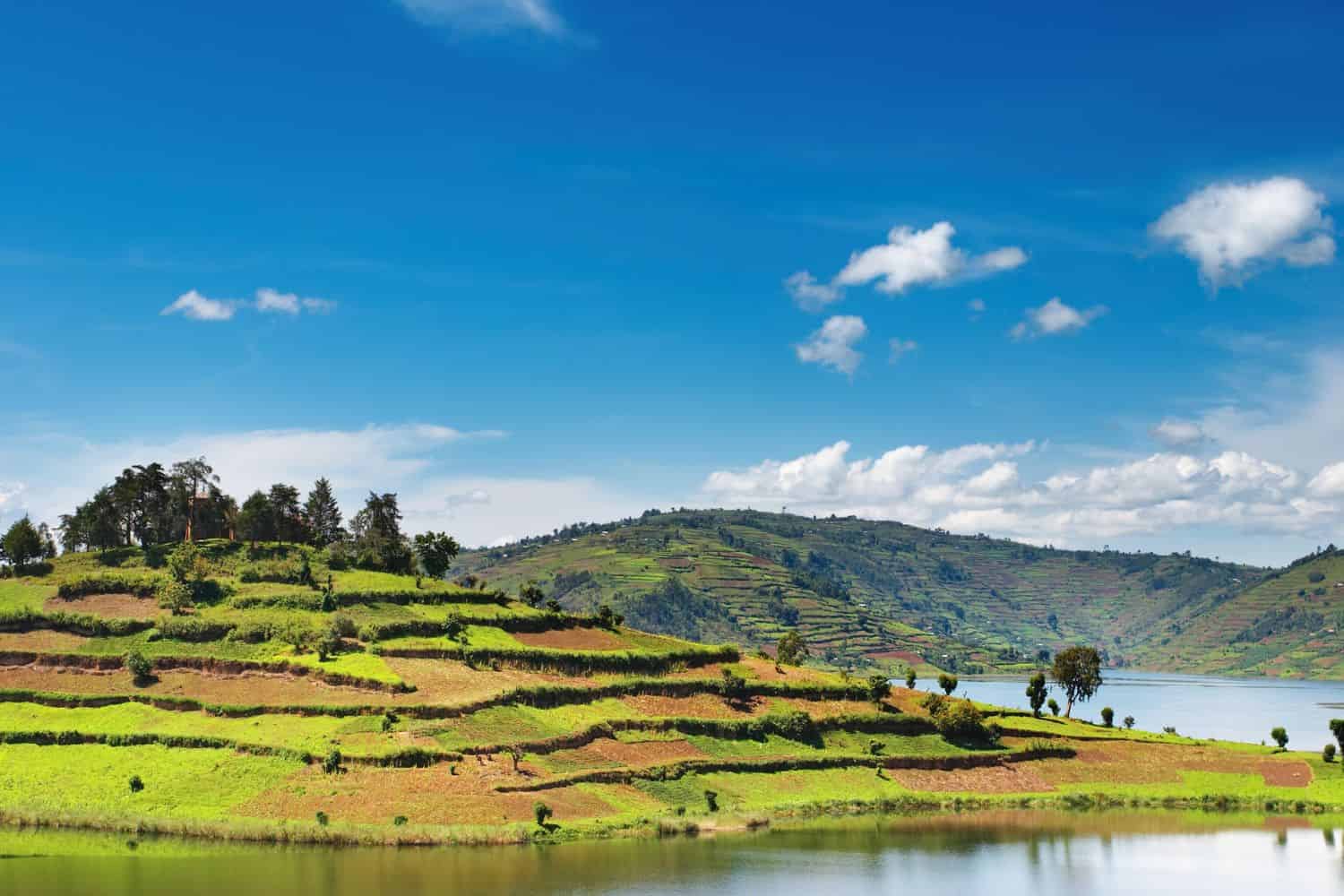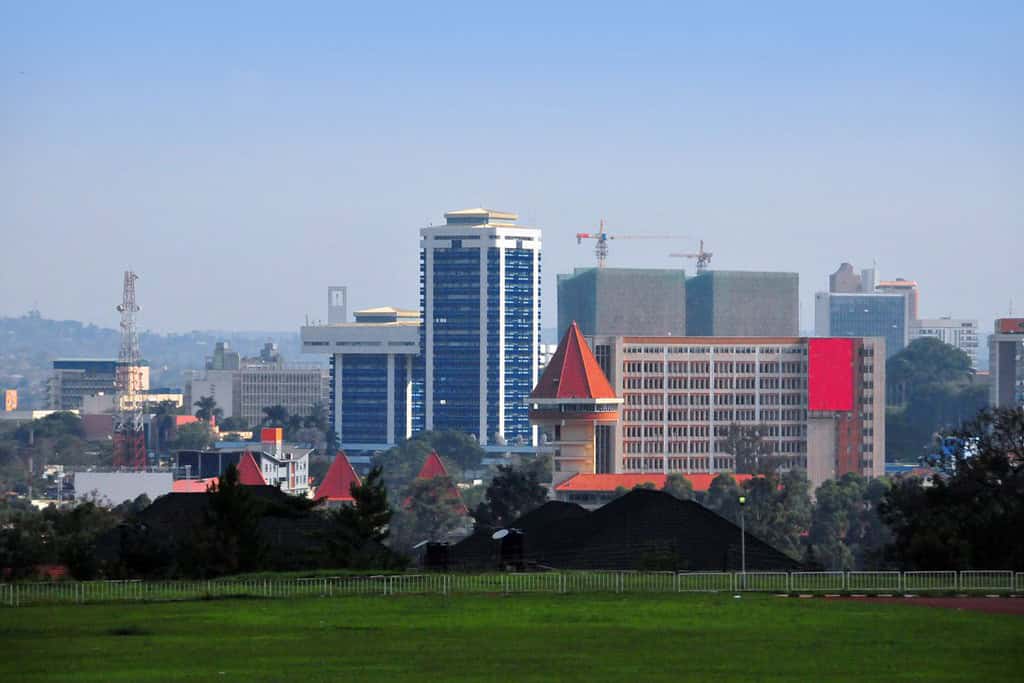Table of Contents
The geography of Uganda is a captivating blend of diverse landscapes and historical significance. Situated in East Africa, this nation’s geographic location has played a pivotal role in shaping its history and cultural identity.
Nestled around the shores of Lake Victoria and along the equatorial belt, Uganda geography invites adventurous travelers with its vast savannahs, the impressive Rwenzori mountains, and rich wildlife reserves. From exploring the lush rainforests of Bwindi to uncovering the cultural tapestry of Kampala, Uganda’s diverse landscapes and rich history offer an unforgettable journey for intrepid tourists seeking a unique and enriching experience.
Uganda physical geography paints a picture of awe-inspiring natural masterpieces. From the mesmerizing source of the Nile River, representing the nation’s vital freshwater heritage, to the diverse ecosystems that span from the mountain gorilla habitats to the expansive wetlands, Uganda stands as a testament to nature’s grandeur.



Top Geographic Features of Uganda
- Rwenzori Mountains: These mystic mountains, also known as the “Mountains of the Moon”, span the western border of Uganda and the Democratic Republic of Congo. They play a significant role in Uganda’s topography and are home to some of Africa’s highest peaks.
- Nile River: Originating from Lake Victoria, the world’s longest river flows northward through Uganda, providing vital water resources for agriculture and energy production.
- Lake Victoria: Located in southeastern Uganda, this is the world’s second-largest freshwater lake. It’s essential for fishing, transportation, and supports a rich biodiversity.
- Kidepo Valley: Situated in the northeastern corner of Uganda, this semi-arid region is renowned for its national park and unique wildlife, hosting some species not found anywhere else in Uganda.
- Murchison Falls: Located on the Nile River, these powerful waterfalls are one of Uganda’s top tourist attractions, with water thundering down through a narrow gorge.
- Kyoga Basin: This extensive region in central Uganda is dominated by Lake Kyoga and its surrounding swamps, which play a role in supporting agriculture and fishery.
- Kazinga Channel: A natural channel that links Lake Edward and Lake George, it boasts one of the world’s largest concentrations of hippos and numerous bird species.
- Bwindi Impenetrable National Park: Located in southwestern Uganda, this ancient rainforest is home to roughly half of the world’s remaining mountain gorillas, making it a UNESCO World Heritage site.
- Ssese Islands: Located within Lake Victoria, this archipelago is known for its picturesque beaches and rich cultural history.
- Mount Elgon: Straddling the border between Uganda and Kenya, this extinct volcano is known for its vast caldera and the unique cave formations it houses.
Uganda geographic features play a crucial role in shaping Uganda’s landscape, climate, and cultural history, making them essential elements in defining the country’s geography.
Uganda Geography

Exploring the Uganda National Geographic canvas unfolds a mesmerizing array of geographic wonders. From the grand Rwenzori Mountains to the expansive Lake Victoria shores and the fertile coffee-growing regions, the country displays a captivating panorama of natural beauty.
- Mountain Ranges – The Crown of Diversity: Just as documentaries often highlight impressive mountain ranges, Uganda is proud of the Rwenzori Mountains, sometimes referred to as the “Mountains of the Moon”. These formidable peaks not only enhance the nation’s scenic allure but also offer distinctive biodiversity and play a vital role in shaping its cultural backdrop.
- Lakes – A Symphony of Reflections: Uganda’s Queen Elizabeth National Park, with its shimmering crater lakes, evokes imagery of postcard-perfect landscapes. These pristine lakes, bordered by savannahs and forests, mirror the region’s geological richness.
- Savannahs – Vast Plains of Life: In the same way documentaries spotlight expansive terrains, Uganda’s savannahs reveal vast plains teeming with diverse wildlife. This bountiful region narrates tales of local traditions and the nation’s natural resources.
- Historical Sites – Journey to Yesteryears: Uganda’s historical landmarks, like the Kasubi Tombs, stir memories of explorations that delve into ancient kingdoms. These relics stand as symbols of the country’s rich cultural lineage.
- Ethnic Diversity – A Cultural Tapestry: Aligning with the National Geographic emphasis on varied cultures, Uganda is a blend of ethnic groups, including the Baganda, Basoga, and Banyankole. Each tribe enriches the nation with distinctive traditions, dialects, and practices, weaving a colorful cultural fabric.
- Wildlife – Nature’s Sanctuary: Uganda’s protected zones, such as Bwindi Impenetrable National Park, reflect global wildlife conservation initiatives. These areas are essential refuges for a plethora of species, ensuring biodiversity in a diverse setting.
- Geological Marvels – Earth’s Showcase: Uganda’s natural wonders, like the Murchison Falls, highlight the country’s intrinsic beauty amidst its lush landscapes. Such formations exemplify the compelling forces of nature in action.
- Remote Exploration – Into the Wild: Uganda’s less-traveled regions, like Kidepo Valley, entice explorers much like journeys into unseen lands. This untouched realm provides insights into pristine habitats and unparalleled ecosystems.
Uganda geographic characteristics are accentuated by the commanding presence of the Rwenzori mountain range. These grand peaks, standing tall in the west, provide a majestic canvas for the nation’s varied terrain. Historic trails, once crucial for local commerce, traverse these impressive mountains, linking parts of East Africa.
Gracefully meandering across Ugandan landscapes are the life-sustaining rivers like the Nile, paramount for farming and irrigation. Moreover, the vast Lake Victoria and the green expanse of the country’s rainforests add depth to Uganda’s distinct geography.
Uganda Geographic Location

Uganda geographic location is very strategic, and its position has played a significant role throughout history. Located in the eastern part of Africa, the country has been a nexus for trade, culture, and ideas, emphasizing its historical importance.
Borders of Uganda
Uganda shares borders with five countries. Here is Uganda physical geography with the neighboring countries and the approximate total length of each border:
- Kenya: The border between Uganda and Kenya is approximately 933 kilometers long, making it the longest international border for Uganda.
- Tanzania: The border between Uganda and Tanzania is approximately 396 kilometers long.
- Rwanda: The border between Uganda and Rwanda is approximately 169 kilometers long.
- South Sudan: The border between Uganda and South Sudan is approximately 435 kilometers long.
- Democratic Republic of the Congo (DRC): The border between Uganda and the DRC is approximately 877 kilometers long.
| Uganda Neighboring Country | Border Length (Approximate) |
|---|---|
| Kenya | 933 kilometers |
| Tanzania | 396 kilometers |
| Rwanda | 169 kilometers |
| South Sudan | 435 kilometers |
| Democratic Republic of the Congo (DRC) | 877 kilometers |
These international borders define Uganda’s connections to different regions and contribute to the country’s geopolitical significance as a crossroads between East Africa and the Great Lakes Region.
Geography of Kampala Uganda

As the capital city of Uganda, Kampala is a captivating microcosm of the country’s human geography. Here, various ethnic groups, including the Baganda, Basoga, Banyankole, and Indians, coexist, contributing to the city’s vibrant cultural tapestry.
Kampala, the capital city of Uganda
- City of Contrasts: Kampala is known for its stark contrasts, where modern skyscrapers coexist with traditional Kibandas, creating a unique blend of old and new.
- Lake Victoria: Lake Victoria borders the city, playing a significant role in its trade and transportation.
- Kampala’s Elevation: The city is located on several hills, offering panoramic views of the surrounding landscapes.
- Green Spaces: Kampala is home to several beautiful parks and gardens, including the Uganda Wildlife Education Centre, offering a serene escape amidst the bustling city.
- Kampala’s Historical Significance: With a history deeply rooted in the Buganda kingdom, Kampala has witnessed various epochs and played a pivotal role in East African politics and trade.
- Diverse Architecture: The city showcases a diverse architectural heritage, reflecting influences from British colonial, Indian, and modern styles.
- Local Music Culture: Kampala is a hub for contemporary Ugandan music, and its vibrant dance and music culture can be seen and heard throughout the city.
- Kabaka’s Palace: The historic Kabaka’s Palace, located in the heart of the city, is an iconic symbol of Uganda’s royal history.
- Kampala’s Economy: The city serves as Uganda’s economic and cultural hub, attracting people from all over the country seeking opportunities and education.
- Population Growth: Kampala has experienced steady population growth, with a significant influx of people from various regions of Uganda, leading to urbanization and infrastructure challenges.


Historical Geographical Importance of Uganda
Throughout the ages, Uganda’s geographical significance has made it a sought-after stage for historical events. As empires and nations rose and fell, from the British to the indigenous kingdoms and Arab traders, Uganda’s geographic position played a pivotal role in shaping the continent’s history.
- Strategic Heartland: Uganda’s location at the heart of the African Great Lakes region has made it a strategic point for trade, cultural exchange, and military endeavors throughout history.
- Ancient Trade Routes: The indigenous trade routes passed through Uganda, connecting various tribes and facilitating the exchange of goods, ideas, and cultures.
- Arab Traders: Uganda was a key territory for Arab traders during their expeditions into the African interior, introducing Islam and trade networks.
- British Colonial Era: During the late 19th and early 20th centuries, Uganda became a significant part of the British colonial empire, influencing its governance, education, and infrastructure.
- European Exploration: Uganda attracted European explorers, such as John Hanning Speke, who were in search of the source of the Nile and other geographical wonders.
- Influence of Indigenous Kingdoms: Uganda was home to various powerful kingdoms, including the Buganda, Bunyoro, and Ankole, shaping its early history and cultural fabric.
- Conquests and Religions: The introduction of Christianity and Islam during the 19th century had a profound impact on Uganda’s history, leading to a blend of beliefs, customs, and traditions.
- The Great Lakes and Wildlife: The lakes, such as Lake Victoria and Lake Albert, and the abundant wildlife in national parks like Bwindi, have become symbols of Uganda’s ecological and historical identity.
- Influence of Music and Dance: Uganda’s position as a melting pot of cultures birthed various music and dance genres, reflecting its diverse ethnic groups and influencing its culture, art, and celebrations.
The geographical position of Uganda, nestled in the heart of East Africa, is a lush and diverse tapestry of natural beauty and ecological significance. Known as the “Pearl of Africa,” Uganda boasts a rich array of landscapes, from the snow-capped Rwenzori Mountains to the shores of Lake Victoria, the continent’s largest lake. The country is renowned for its biodiversity, including dense rainforests that are home to endangered mountain gorillas.
In conclusion, Uganda’s geographical location has significantly shaped its ecological and cultural identity. Straddling the equator and encompassing a portion of the Great Rift Valley, it has a mix of East African savannas and West African rainforests. This unique positioning has made Uganda a melting pot of cultures and languages, and a key player in the regional dynamics of East Africa. Despite challenges, Uganda’s strategic location and natural resources continue to be pivotal in its development and role in regional affairs.
More About Uganda
[the-post-grid id=”50440″ title=”Uganda Main page”]
